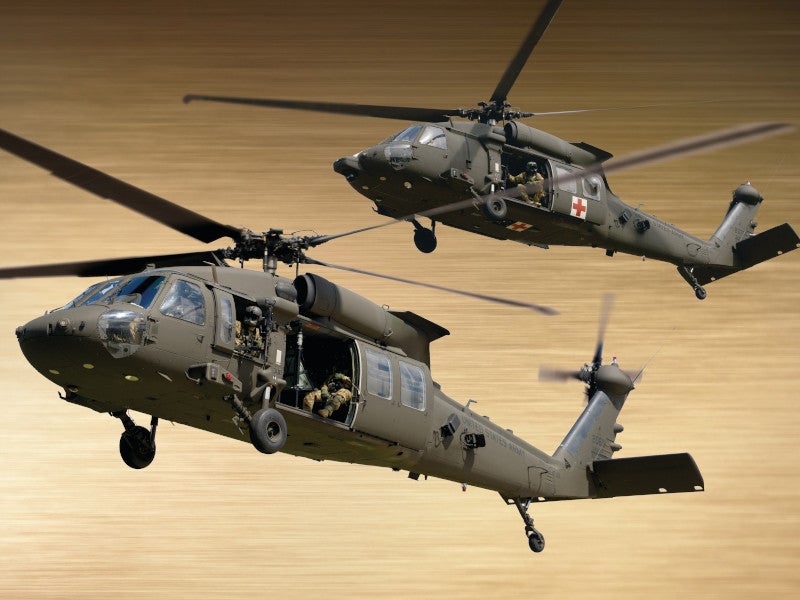Understanding the Mechanics and Engineering Behind Uh 60 Helicopters
The UH-60 helicopter, generally referred to as the Black Hawk, stands as a pinnacle of contemporary rotorcraft innovation, embodying a blend of robust design and intricate technicians. From its inception to its existing models, the development of this aircraft showcases a fusion of technology and functionality. As we peel back the layers of the UH-60's design, a globe of detailed systems and precise design emerges. Recognizing the auto mechanics and engineering behind this flexible airplane introduces a world where accuracy meets power, and where each part plays an important function in attaining flight.
Background of UH-60 Helicopters
The history of UH-60 helicopters traces back to the late 1970s when the United States Army sought a advanced and versatile energy helicopter to change its aging fleet. In feedback to this demand, the Sikorsky Aircraft Company established the UH-60 Black Hawk helicopter. Introduced in 1979, the UH-60 swiftly came to be a staple in armed forces operations because of its impressive capacities.
The UH-60 was designed to excel in a range of goals, including army transport, medical emptying, digital war, and special operations. Its capacity to adapt to various functions made it a beneficial asset to the U.S. uh 60. Military and other military pressures around the globe
Throughout the years, the UH-60 platform has actually gone through several upgrades and variants to enhance its performance and keep speed with progressing mission requirements. These helicopters have seen comprehensive solution in conflicts such as the Gulf War, Afghanistan, and Iraq, showcasing their reliability and flexibility in diverse functional atmospheres. The UH-60's abundant history is a testament to its enduring heritage as a leading utility helicopter.

Engine and Power Equipments
Making use of innovative propulsion technology, UH-60 helicopters are furnished with sophisticated engine and power systems to make certain optimal efficiency and reliability in a variety of operational circumstances. The UH-60, typically referred to as the Black Hawk, is powered by two General Electric T700-GE-701D engines, each efficient in delivering up to 1,940 shaft horse power. These turboshaft engines offer the necessary drive for the helicopter to bring out its objectives successfully, including army transport, medical discharge, and combat support.

Rotor System and The Rules Of Aerodynamics
Exactly how do the blades system and the rules of aerodynamics of you can check here UH-60 helicopters contribute to their functional efficiency and flight abilities? The blades system of the UH-60 helicopter plays an important role in supplying lift and propulsion.
Aerodynamics likewise play a vital role in the efficiency of UH-60 helicopters. The streamlined body and rotor blade layout lower drag, permitting the helicopter to achieve greater speeds and much better gas effectiveness. The wind resistant layout of the UH-60 additionally adds to its capability to run in diverse environmental problems, consisting of high elevations and hot temperatures.
Avionics and Trip Control Systems

In its detailed sychronisation with the blades system and the rules of aerodynamics of UH-60 helicopters, the avionics and flight control systems form a crucial network of technologies forming the aircraft's functional capabilities. In the UH-60, these systems consist of digital display screens, communication radios, GPS navigating, weather radar, and autopilot systems.
The trip control systems of the UH-60 are in charge of equating the pilot's inputs right into the appropriate modifications to the rotor system, guaranteeing secure trip browse around here and ability to move. These systems contain hydraulic actuators, servos, and computers that interact to control the tail and primary rotors, in addition to other trip control surface areas. By precisely taking care of the helicopter's trip dynamics, these systems allow pilots to perform a wide variety of missions, from transportation and search-and-rescue to battle operations, with precision and confidence.
Function and Applications in Air Travel
Avionics systems in UH-60 helicopters encompass a variety of digital systems that help in navigating, communication, monitoring, and controlling numerous airplane functions. These systems consist of digital display screens, autopilot systems, communication radios, GPS navigation equipment, and weather condition radar. In addition, these systems integrate safety features such as auto-pilot settings, surface understanding alerting systems, and stability augmentation systems to improve the general security and functional capabilities of the UH-60 helicopters in different goals, consisting of troop transport, clinical evacuation, search and rescue, and airborne firefighting.
Final Thought
In final thought, the UH-60 helicopter is a functional airplane with an abundant background and advanced design. Its engine and power systems, blades system, aerodynamics, avionics, and trip control systems all collaborate to make it a effective and dependable machine. The UH-60's role and applications in aeronautics are large, ranging from military operations to browse and rescue missions. Its continued advancement and usage demonstrate its relevance in the field of air travel (uh 60).
In its detailed sychronisation with the blades system and aerodynamics of UH-60 helicopters, the avionics and trip control systems create a critical network of innovations forming the aircraft's operational capabilities.The flight control systems of the UH-60 are responsible for equating the pilot's inputs right into look at this website the suitable changes to the blades system, guaranteeing secure trip and maneuverability. Avionics systems in UH-60 helicopters include a variety of electronic systems that help in navigating, interaction, monitoring, and managing various aircraft functions. Furthermore, these systems integrate security features such as auto-pilot settings, terrain understanding advising systems, and stability enhancement systems to improve the general safety and functional capabilities of the UH-60 helicopters in different goals, including army transport, clinical evacuation, search and rescue, and aerial firefighting.
Its engine and power systems, rotor system, the rules of aerodynamics, avionics, and trip control systems all work with each other to make it a efficient and dependable machine.